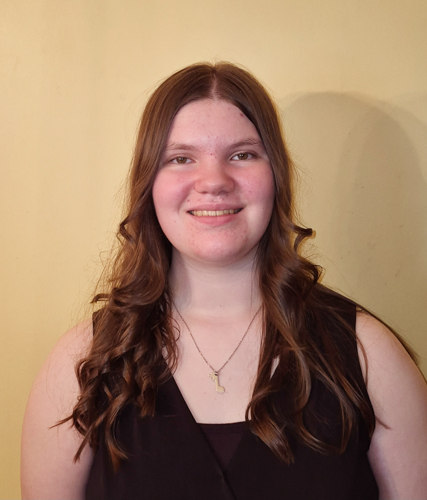by Sara Weston
Music is part of my soul, just like South Carolina.
I sway to the beat like tall grass in the breeze,
letting notes of the ocean guide me.
With a flick of my wrist,
the sand dunes shift
as the wind beats down harder.
Moving up to the sky;
ledger lines fly by as pitches pierce the clouds up high.
Pillows of cumulus,
now a gray, ruined mess,
send warnings of rain showers.
With a crash of the cymbal and hit of the drum,
thunder rings out and ocean waves push on.
If music can show the Atlantic,
then why do schools render its programs defenseless?
On days when the sky is crying,
music is its first responder.
The trees collect the tears;
they have dried their eyes for years,
steadfast friends of understanding.
Even the mountains turn droplets to snow,
following their conductor’s dramatic crescendo.
Then resounding cheers from birds appear
when the snow finally melts and spring is here.
The melody of South Carolina flows throughout the state,
from the Piedmont to Coastal regions.
The Midlands blend them like vocals,
and South Carolina becomes its own choir.
Music is always there for me, just like South Carolina,
but some school districts neglect the arts,
hiding them away like cracked china.
My mathematics is not quadratics;
it is pulse of beats per minute, which is confined to my mind’s attic.
Students cannot fully enjoy music until they have played a part in creating it,
so give them a reason to participate in making a bit.
On rainy days, my school is a maze,
a rushing river down to the basement.
Past rhythmic rain droplets and splashing deep puddles,
there is a building that contains the wonders of chorus, band and orchestra.
Despite its sodden surroundings, the building contains musical instruments,
building eager students’ excitement,
and not even the worn cellos in the corner can ruin the scene.
There are some good instruments,
well loved by the many students who pass through the school.
Those provide students with a creative outlet beyond their academic classes.
Music reaches into the core of a person and finds their ability to make something
for the masses;
beautiful, haunting and joyous sounds come from the student’s own potential,
as vibrating strings, vocal cords, and tubes of wind become meaningful.
Through music, people connect their souls.
South Carolina has many places where people watch musical performances,
but the lack of proper funding and respect for music education chokes the next generations.
For some other schools, administrative ignorance leads to diminishing programs;
however, mine see how instrumental these growing programs are.
Instead of leaving students to fend for themselves like baby sea turtles fighting
to survive from nest to ocean,
schools need to acknowledge the necessity of music in their students’ education.
Beyond administrative support is the need for mutual respect among teachers.
Subjects are meant to promote intelligence, creativity, and compassion.
Music does its share, combining kids in pairs,
yet in the end, all sections come together.
Despite contrasting instruments, an orchestra is born.
By supporting music programs, schools add another section to their symphony.
In that way, South Carolinians become more creatively minded, finding solutions in
new ways,
and music becomes part of their souls, too, just like South Carolina.

About Sara Weston
Sara Weston is a senior at AC Flora in Columbia, where Kaitlyn Jacobs is her English teacher. The daughter of Sallee and Mark Weston, Sara is active in chorus, theater, and orchestra, and plans to study music composition and vocal performance at the University of South Carolina. In the future, she wants to compose musicals with personal themes. She would like to thank her sister, journalism graduate Madelyn Weston, for proofing her initial draft, and Dylan Wright, a student in the University of South Carolina Honors Course, “Finding Your Voice: Writing and Editing for Life,” for editing her final draft.